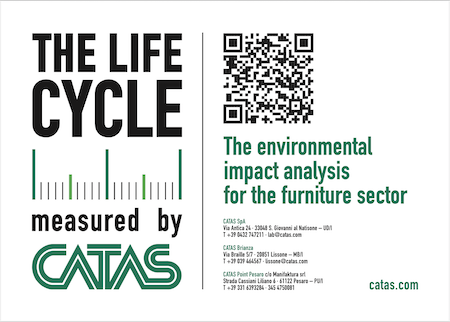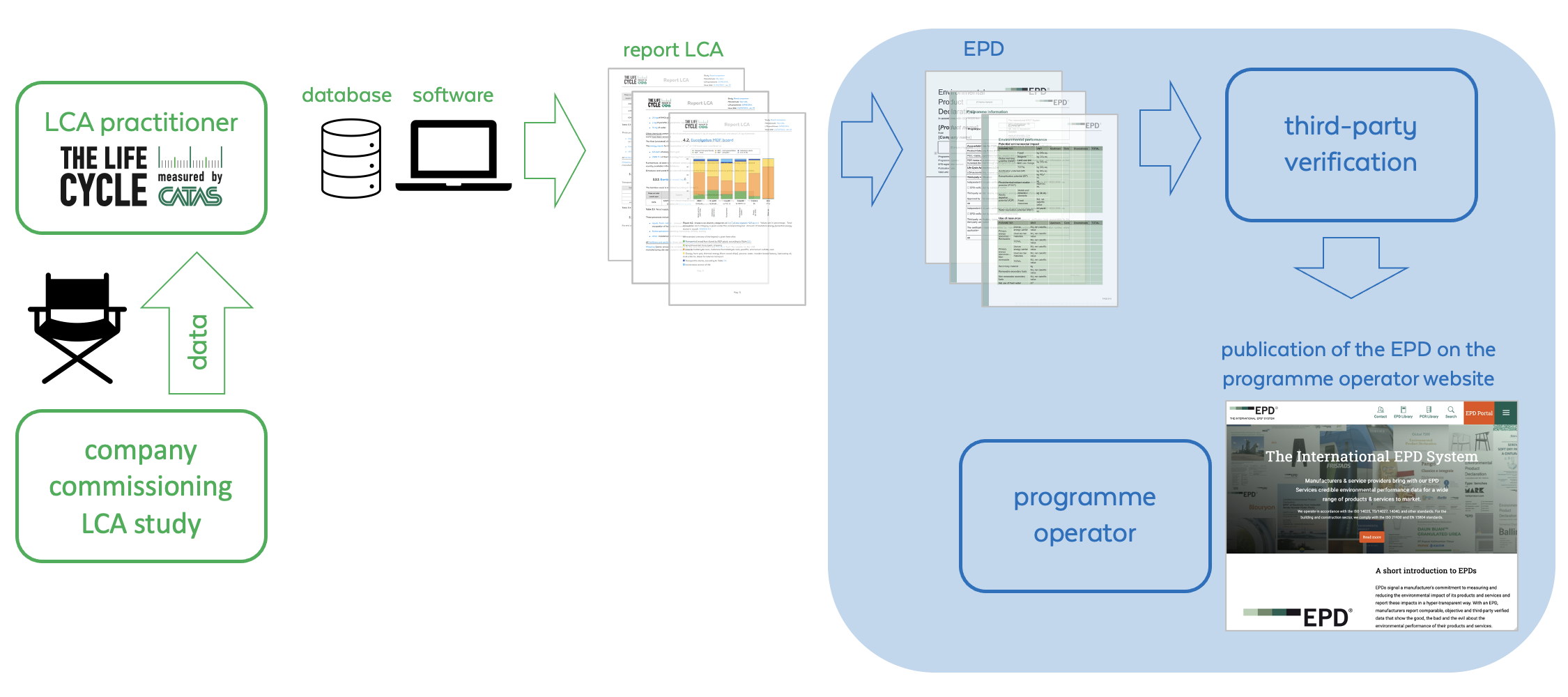
Even for furniture, the transition from “is it sustainable?” to “how much does it impact?” is now in full effect along the entire supply chain. Whether it's a panel, a varnish, a door or an entire seat or piece of furniture, what matters - and what companies need - today is just “how much”.
The “how much” is necessary to get to know your company and its products better, to highlight areas for improvement and to be able to certify the company's commitment and sensitivity to environmental issues.
In fact, to reduce one's impact one must first measure it and know it through tools such as Life Cycle Assessment (LCA).
The LCA is a standardised method (ISO 14040, ISO 14044) for quantifying the environmental damage caused by a product or service. In order to assess the damage caused, it takes into account all inputs (materials, energy, water) and outputs (waste, emissions) required during the entire life cycle of the good, from extraction of raw materials to final disposal.
It is, to all intents and purposes, a measure expressed by means of a numerical value and, as such, is closely linked to the quality and traceability of the data as well as the way in which they are processed.
For example, some of these “measurable” environmental damages are greenhouse gas emissions, land acidification and consumption of resources (mineral or fossil).
The LCA study is normally presented in an
LCA report that includes the description of the product or service analysed, the data collected and the method used, the presentation of the environmental measures or impacts, and the interpretation of the study.
The validity of such a study can be limited to
internal evaluations (e.g. a comparison of two materials or processes used) by the company, but can
also be used
for environmental labels. In the context of
Type I environmental labels that require fulfilment of requirements, such as the CATAS Quality Award Safe Durable Sustainable designed for paints, but especially in
Type III environmental labels that are designed as a natural development of an LCA study. In order to obtain them, they need to be published by a so-called
programme operator, which is a body set up for this purpose, typically within international web platforms subdivided by product sector and freely consultable by operators or buyers.
Obviously, for confidentiality reasons, the entire study is not published, but only an extract containing the description of the product, the methodology used and the measurements obtained as a result. This summary document of an LCA study is called an
EPD (Environmental Product Declaration). The EPD is the Type III environmental label and the label, once obtained, can be used on the product's packaging or wrapping, on the company's website and in brochures. For an example of an EPD, please refer to the website of the most important European programme operator (International EPD System,
www.environdec.com).
Before an EPD is published, another party is involved: the
third-party verifier, an accredited body that verifies that the EPD's LCA study corresponds to the reference standards and guidelines of the programme operator.
To this must be added that, drawing up the study is complex and requires special software and databases. For this reason, companies often rely on an
LCA practitioner, a consultant who analyses the data provided and drafts the report.
In this sense,
CATAS proposes itself as LCA practitioner for companies in the wood-furniture sector and beyond, accompanying companies in the drafting of an LCA study both with a view to internal analysis and awareness of their processes and materials and with a view to EPD publication.
Thanks to its knowledge and use of the appropriate tools, CATAS follows the company throughout the entire drafting process, going through the
following steps:
· Selection of the product/service to be analysed
· Visiting the production site and defining the process diagram
· Guidance in collecting the necessary data
· Analysis of collected data

· Preparation of the model on software and calculation of impacts
· Presentation and interpretation of results
· If required, preparation of the EPD and support for the third-party verification phase.
So don't be put off by the complexity of the tool, CATAS can support you right from the start!Our technicians are available for more information and further details
For info:Matilde Ceschia
0432 747241
ceschia@catas.com


